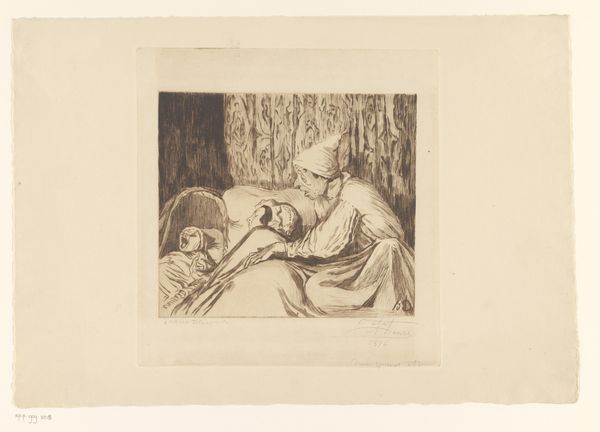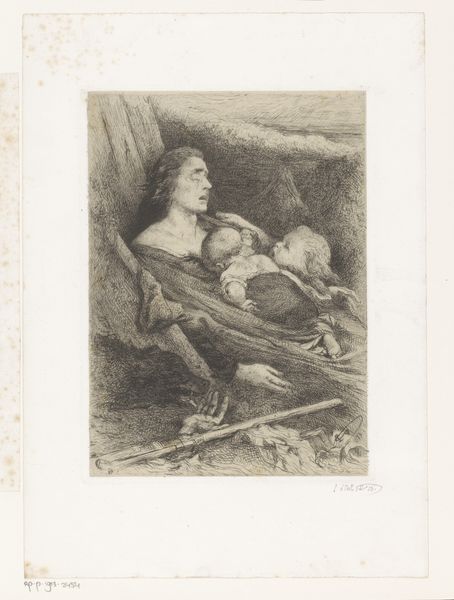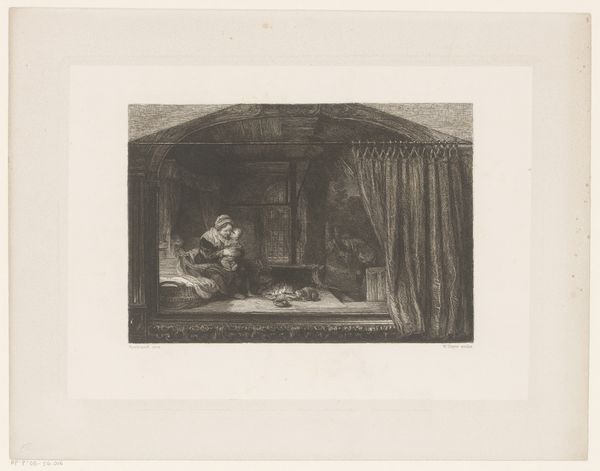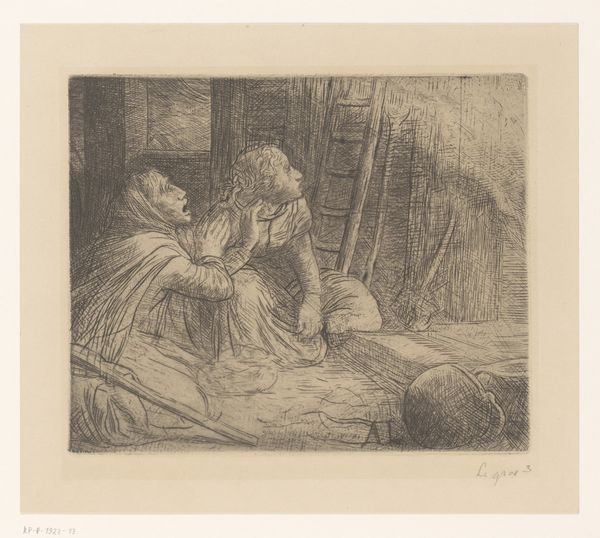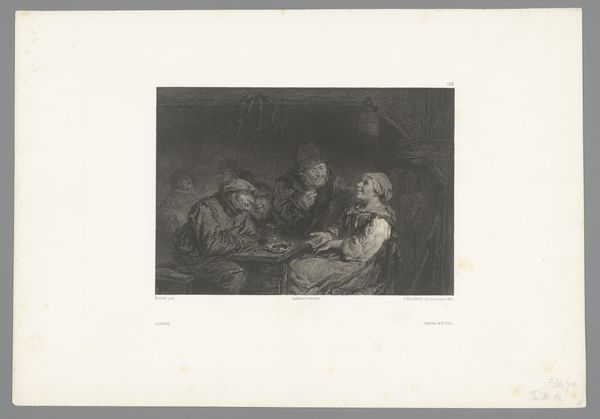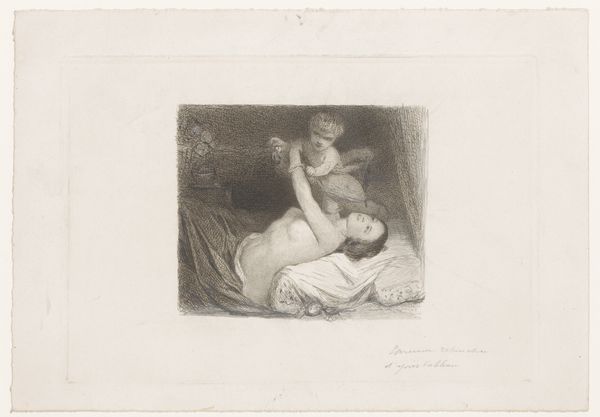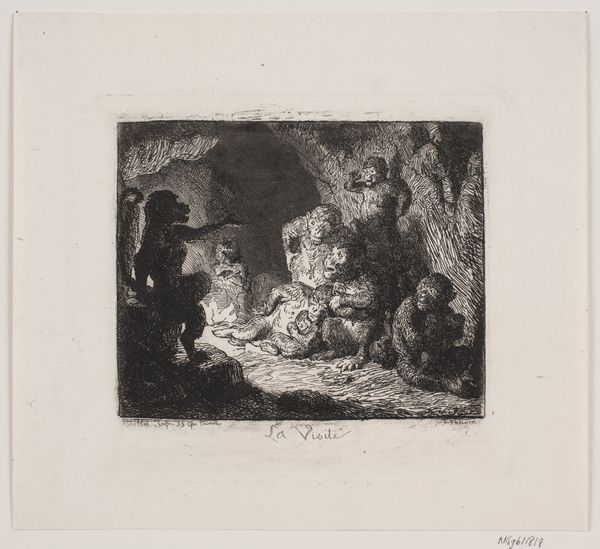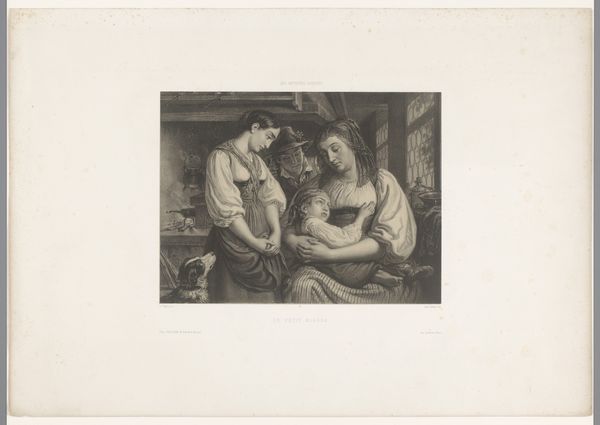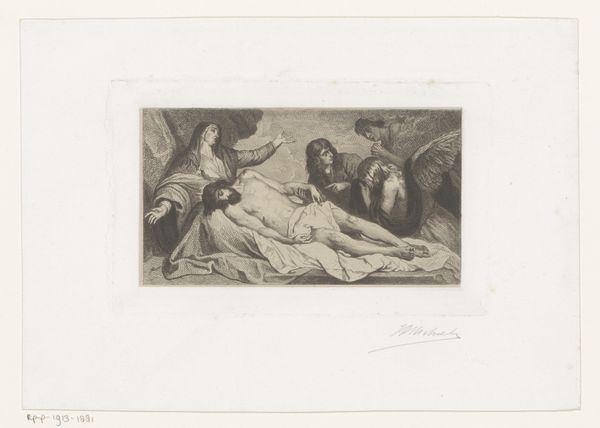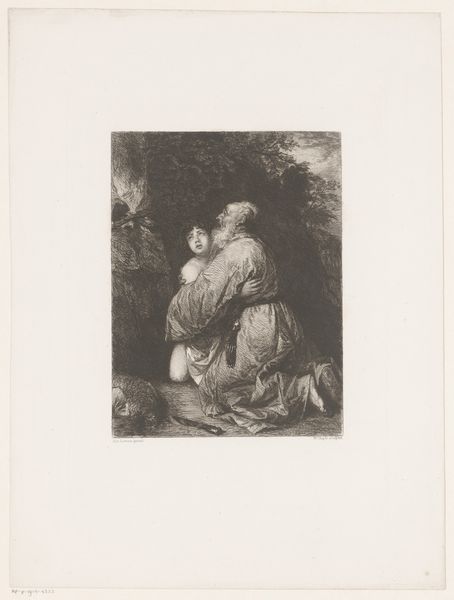
Dimensions: height 200 mm, width 278 mm
Copyright: Rijks Museum: Open Domain
Editor: This is William Unger’s etching "Jacob Blessing the Sons of Joseph," made sometime between 1847 and 1889. It's currently held at the Rijksmuseum. There’s something really moving about the light and shadow here; it feels very intimate. What strikes you most when you look at this piece? Curator: Beyond the intimate mood, what grabs my attention is the positioning of the figures within a historical context rife with power dynamics. Unger recreates the biblical scene, but how does it play into 19th-century notions of family, inheritance, and the role of women, as we see with the almost detached female figure to the right? Editor: That’s a great point. She does seem almost like an observer. Curator: Exactly. How might the blessing scene, usually about patriarchal lineage, be subtly critiqued or reinforced through her quiet presence? Also consider Unger's choice of etching—a medium that allows for reproduction. Is he democratizing a biblical narrative, bringing it to a wider audience, or simply participating in the art market of his time? Editor: So, it's not just the religious narrative, but also the socio-political context of Unger's time that gives the work deeper meaning? Curator: Precisely. We have to consider what this image might have meant to people then, how ideas of family and legacy were changing. Does Unger subtly question or solidify these societal structures? This piece provides a lot to consider regarding class, gender and the shifting sands of societal expectations in the 19th Century. Editor: It’s amazing how a seemingly straightforward image can open up so many layers of interpretation when viewed through a historical and cultural lens. Curator: Indeed, and remembering to challenge the narratives, question the established power structures, that's where art truly speaks to our present.
Comments
No comments
Be the first to comment and join the conversation on the ultimate creative platform.
